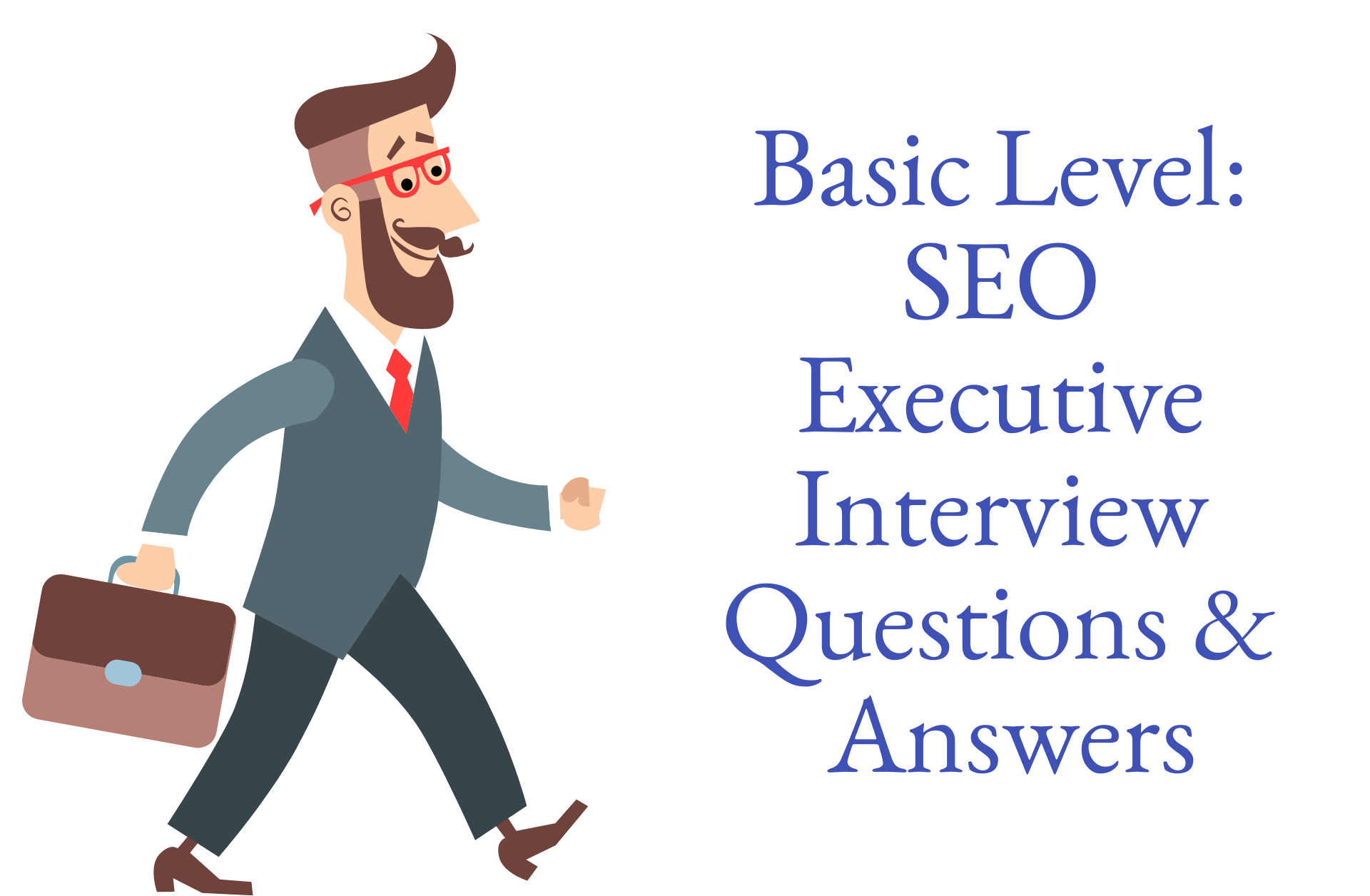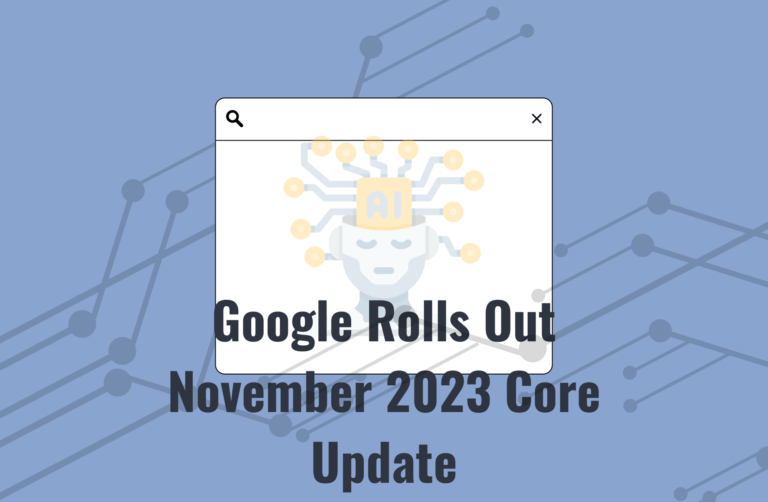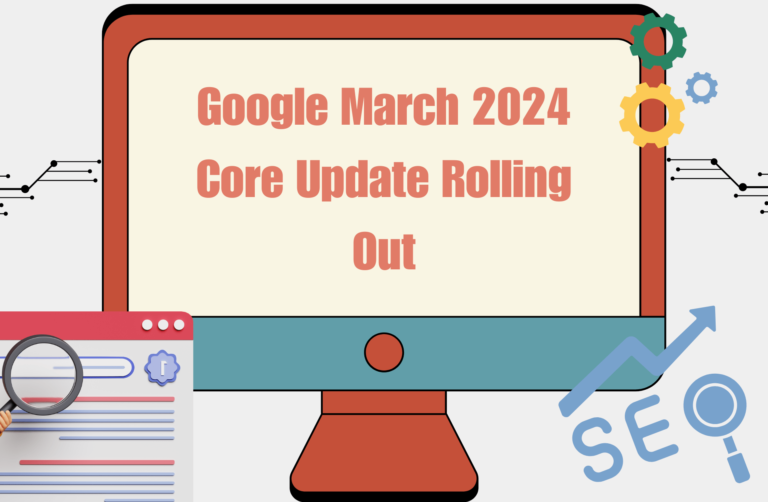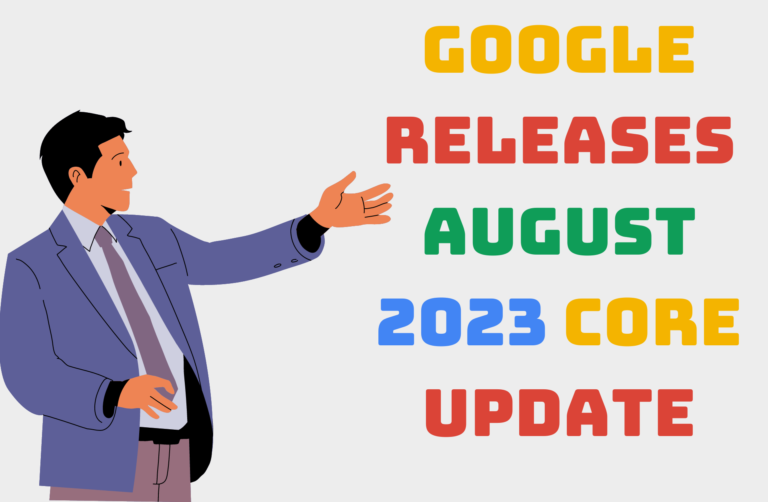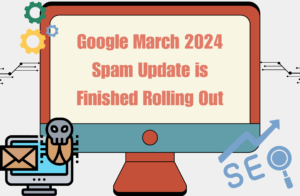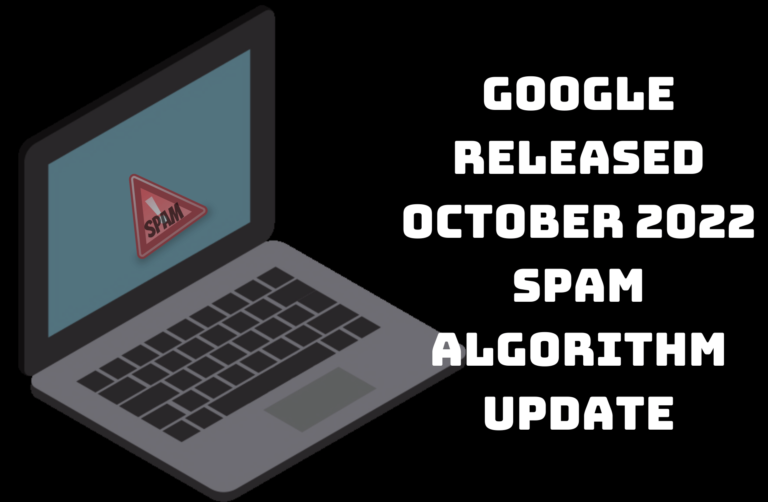Hey SEOs!
Ever wondered what are the most important SEO Executive Interview Questions and their Answers?
Before attending an SEO Executive Interview, it’s better to have a clear idea about the Basic SEO Interview Questions that will be asked based on your level of experience so that you can prepare answers for them.
To help you with all the answers, I have created the top SEO Interview Question and Answers guide for freshers or beginners to understand and real-intent of SEO or executive professionals Interview Questions.
Let’s get started.
Table of Contents
Basic Level: SEO Executive Interview Questions & Answers
1. What is SEO?
SEO is a process of using ON page, OFF page and Technical factors to improve the organic rankings of keywords in the SERPs for a website.
2. Why is SEO so important to businesses?
There are over 70,000 Google searches each second.
So, with so much presence of users there is a big opportunity to snatch business from competitors by using SEO practices.
3. What are the most important Google Ranking Factors?
Well, there is not a confirmed answer for this particular question as Google has more than 200 ranking signals.
4. Most important Google ranking factors are:
– Quality Web-Page Content
– Following Google Guidelines
– Good Page Experience
– Mobile friendly website
– Quality of Backlinks
– Domain Authority
– Page Authority
– HTTPS
– Social Signals
5. What is web crawling?
It is a process where search engine bots crawl websites for indexing.
The crawling process depends on how frequently you update your website with fresh content, which means the more you update the quickly the crawler will visit your website and vice-versa.
6. What is an organic result?
Organic results are those result pages that we see in the search engines when a user query is entered.
The organic results are based on various factors like relevancy, quality and other ranking factors.
7. What is Google Sandbox?
Google Sandbox Effect is a theory where new websites are kept normally and can’t rank well for its most important keywords.
It has never been announced officially but was mentioned when Google was talking about different topics.
8. What is Google Autocomplete?
It is a function where when a user types a query in the search box, the autocomplete function gives you a list of options to complete your search.
9. What is Googlebot?
It is Google’s web crawler to find, crawl and index web pages.
10. What is DA and PA?
It is one of most Basic SEO Question.
DA stands for domain authority. It ranges from 0 to 100.
PA stands for page authority. It ranges from 0 to 100.
11. How important is DA?
DA plays an important role for SEOs.
It is used to quickly understand and determine the quality of websites.
It helps them to compare your site with your competitor’s and understand their authority.
12. Difference between DA and PA.
Domain authority means the power of your website as a whole.
Page authority means the power of a specific page of your website.
13. What is a TLD?
Top Level Domain is the final part of an internet address.
There are various types of TLD available like .com, .net, .org, .co.in, etc.
14. What is ccTLD?
ccTLD is a country code top-level domain.
Each country has their own domain extension.
All ccTLDs are just two characters. For example, .in for India, .us for USA.
15. What is White Hat SEO?
One of the most common questions in any SEO interview questions!
White Hat SEO is a process of improving search engine ranking by following the guidelines of search engines without using any wrong methods.
It includes creating quality content with best graphics and providing value to the users.
16. What is Black Hat SEO?
Black Hat SEO is a process of ranking a website by going against the Google guidelines to improve the search engine ranking.
There are various methods to get immediate ranking like cloaking, keyword stuffing etc.
But it’s better to avoid these practices because if your site gets penalized, it takes so much time and effort to remove it.
17. What are all the most popular SEO tools that we should use?
Another Basic SEO Question is asked by companies, is to understand your expertise over different tools available. Most popular and important SEO tools are Google Analytics, Google Search Console, Ahref, SEMRush, Alexa, Moz, and more.
18. What is a do-follow link?
NO SEO Executive Interview Questions is complete without asking this simple question.
Dofollow links are those links that pass authority (also called as link juice) from one website to another.
When search engines find a dofollow link, it crawls the page.
More do-follow links from highly authority sites means probability of better ranking in SERP as backlink is still an important ranking factor.
Example of a do-follow link:
digiaaj
19. What is a No-follow link?
No-follow is a second type of backlink where search engines bots are asked not to follow the specific link.
In No-follow links no authority passes (also called as link juice) from one website to another.
20. Explain the difference between do-follow and no-follow links?
A Do-follow is a link which passes the link juice from one domain to another and the no-follow is a link that doesn’t pass the link juice. That’s it!
A Do-follow link is more valuable in SEO and No-follow links are less valuable.
21. What is On Page SEO?
On Page SEO are those techniques that we use inside the website. For example – Updating meta tags, content, updating image alt tags etc.
22. What is OFF Page SEO?
OFF Page SEO are those techniques that we perform outside the website, to improve keywords position ranking. For example – Building backlinks from guest posting, social bookmarking and other off page practices.
23. What is a keyword?
A keyword is a word or group of words that has search volume on a search engine, which we target to get traffic out of it.
24. What is keyword frequency?
Keyword frequency is the number of times your keyword is present in your content.
For example – The blog is of 1000 words and the keywords present in it is 7 times, so you can say keyword frequency would equal to 7.
25. What is Keyword Difficulty?
Keyword difficulty stands how much hard/tough/difficult a keyword is to rank for on a search engine.
26. What is Keyword Proximity?
Keyword Proximity means how close your keywords are in your content/article.
The closer the proximity the better it is.
27. What is Keyword Prominence?
Keyword Prominence means that your keyword must be present in the important sections of your like content. For example – In heading tags, the first paragraph, the last paragraph etc.
28. What is Keyword Density?
Keyword Density is how much percentage of your targeted keyword is present in your content.
The number of times you can use your targeted keyword is 1 to 2 percent, which means if your article is of 1000 words then your keyword density should be 2 % of 1000.
29. What is Keyword Stuffing?
Keyword stuffing is a black hat SEO practice that involves increasing the keyword density to a high level in order to rank for a specific keyword on the search engine.
After the Panda update, keyword stuffing to manipulate search engines is no longer recommended and should be avoided at all costs.
30. What is Keyword Stemming?
Keyword stemming is the process of determining a keyword’s root word and then adding suffixes, prefixes, and pluralization to create new keywords.
31. What is the long tail keyword?
Long tail keywords are phrases which have more than 3 or 4 words and are very specific in nature.
On the other hand, short keywords are highly broad when compared to long tail keywords.
The purpose of using long tail keywords is to reveal the intent and nature of the search, resulting in a high amount of conversions if we target them appropriately.
32. What is the bounce rate in SEO?
Without this question, no NO SEO Executive Interview Questions guide would be complete.
One of the most commonly asked questions in any Google Analytics interview.
Bounce rate refers to the percentage of website visitors who depart the landing page without visiting any other pages or taking any action.
Bounce rate is defined as single-page sessions divided by all sessions, or the percentage of all sessions on your site in which visitors viewed only one page and sent only one request to the Analytics server, according to Google.
To reduce bounce rates, increase page engagement (through internal links, CTAs, etc. ), improve page speed, and provide a consistent user experience,
33. What are header tags?
Header tags are nothing but heading tags of your page.
It ranges from h1 to h6 with h1 considered to be most important and h6 to be least.
34. What are meta tags?
Meta tags are those meta titles and meta descriptions which we see on a SERP result.
Meta titles are the titles of a webpage defining its intent.
A good meta title length is 60 characters.
Meta descriptions are the descriptions of a webpage explaining a webpage content.
A good meta description length is 160 characters.
35. What are outbound links?
Outbound links are links from your website to another.
36. What are inbound links?
Inbound links are links from other websites to your own domain.
These are known as backlinks.
37. What is robots.txt?
Robots.txt is a file which instructs search engine crawlers/bots about indexing and caching of a webpage, files or directory.
In this file, you can decide what needs to be indexed and what not.
38. What are anchor texts?
The clickable text in a hyperlink is called anchor text. Anchor texts assist users in understanding the purpose of the page.
If keywords are used in anchor text, it adds SEO value in it. However, if you are overly optimised, Google may penalize you.
39. What are SEO Friendly URLs?
SEO Friendly URLs are those URLs which are easy to understand both for search engines and users.
SEO Friendly URLs are those URLs which are easy to understand both for search engines and users. URLs include keywords that describe the webpage content very well and are as short as possible.
40. What is Robots Meta Tag?
Robots Meta Tag indicates to the search engines how to treat the webpage with commands like FOLLOW, NOFOLLOW, INDEX & NOINDEX.
The code is added to thesection of the page.
The following is an example of a meta robots tag code for index:
meta name=”robots” content=”index”> meta name=”robots” content=”index”>
The following is an example of a meta robots tag code for noindex:
meta name=”robots” content=”noindex”> meta name=”robots” content=”noindex”>
You can also add the two commands if you want:
meta name=”robots” content=”noindex,nofollow”>
41. What is 301 redirection?
One of most asked Basic SEO Interview Questions is designed to assess your technical abilities.
A 301 redirect is a means of permanently redirecting visitors and search engines from an old URL to a new URL.
When a webmaster wishes to redirect from one URL to another for a number of reasons, 301 is the best option because it transfers the majority of link juice from the old page to the new one.
42. What is ALT Tag?
The alt tag is an HTML attribute that allows us to provide each image on our website a description. If the image cannot be displayed in the browser for any reason, people can read the alt tags to figure out what the image is about. It also aids search engines in deciphering the image’s meaning, allowing them to learn more about the page. Alt tags can help search engines rank your website’s photos higher in Image searches.
43. What is an SEO audit?
An SEO audit is a procedure for assessing a website’s search engine optimization.
It will cover a variety of topics, including technical, on-site, and off-site aspects of SEO.
To do an onsite and offsite audit, some SEOs use tools like SEMRush or Ahrefs, or some follow a manual method.
The purpose is to find anything that needs to be fixed as well as areas where search engine optimization can be improved.
Conclusion on SEO Executive Interview Questions and Answers Guide
We hope you our Basic SEO Executive Interview Questions guide is helpful.
This SEO Executive Interview Questions and Answers guide is exactly what you need to prepare for your job interview.
To keep you informed, we will be updating the guide on a regular basis.
Comment what you questions you have been asked when you went for an SEO Executive Interview in the comments box, we will be waiting!



